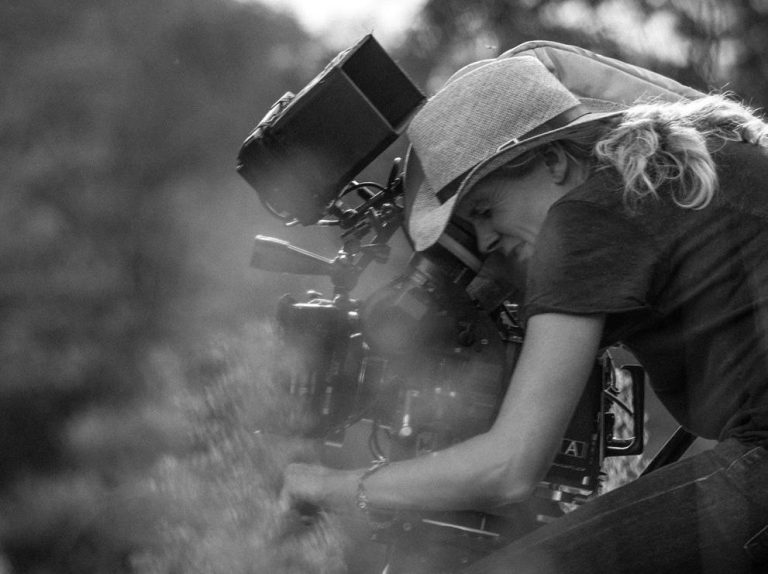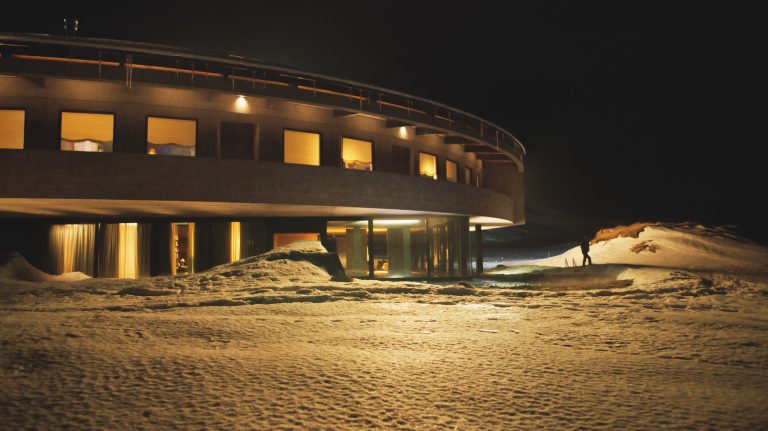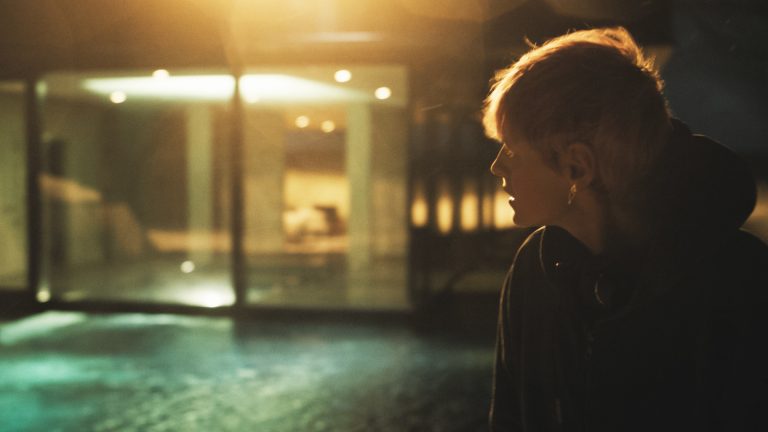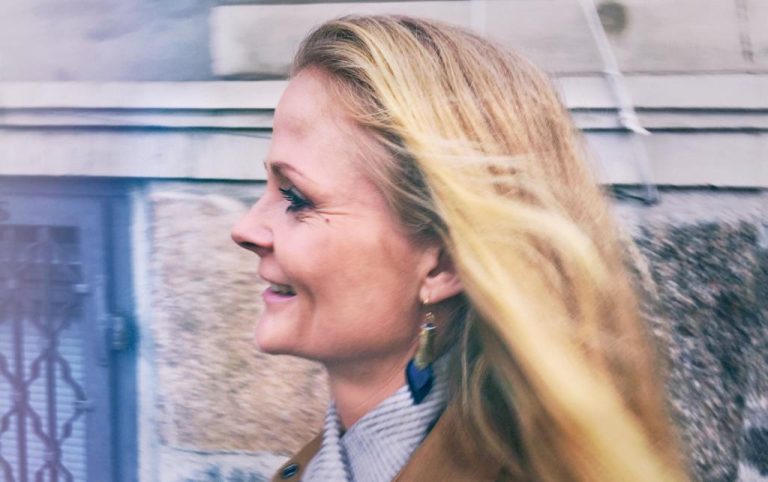
The Dust Would Catch the Light
Updated: 2023/12/19
- Interview
- Brit Marling
BRIT MARLING: I should say to start, to set this story up properly, that I had seen 'A Quiet Place' years ago, and I had never watched horror movies, but I was so moved by this one.
I felt so much tenderness, even inside the scares and the thrills. Every image was like a painting. Years later I watched 'Far From the Madding Crowd' — which is completely different, a period piece, very different stylistically — but I was in the middle of watching the movie and I was like, oh my God, I am having that same feeling I had when I watched 'A Quiet Place', where I'm unusually sutured to the female lead, and something about every image feels like a painting with light. I felt like the same person shot these two things, even though they seemed so far apart in my mind.
So I get on IMDb and I pull it up and I was like, (gasps) "Sherlock, I'm pretty crazy." (laughing). It blew my mind because they were such disparate works in such different genres.
I called Zal and said, ‘I think this is the only person that can tell this story with us.’ And we called your agent and your agent was like, ‘She's on a Julianne Moore movie, it shoots way into the time you guys need to start. I just don't think it's gonna work out.’ I was like, ‘Can I just meet her to tell her to her face how amazing I think her work is?’
And then we met in New York, you remember, at that cafe.
CHARLOTTE BRUUS CHRISTENSEN: I remember we spoke about living in the country. We spoke a long time about what quality of life is.
Then I was so excited when our project got delayed, so it all came together and you said yes and agreed to do it.
Speaking of quality of life, you grew up on a farm in Denmark. How did you first find photography and moving image, and when did you know that was your vocation or your calling?
I see myself as a child always looking to spend time in atmospheric places, if that makes sense. My favourite places were at different spots at the farm, at different hours of the day. I think that's where the visual study started. It was completely , obviously naïve and unconscious.
I knew exactly [where] the light would [be] in the hayloft. The farm was old, my parents didn't have that much money, there would always be little holes in the roof. So I'd go up there and I knew at three, four o 'clock, the sun would be coming through those holes in the roof. And if I threw up hay, the dust would catch the light.
I would spend an hour just on my own, sitting back, looking at the little particles. Or if it was a rainy day, I would go to the swamp behind the village, where the mist would hang. On top of that, my dad’s mom was a sort of hobbyist painter, but I loved her paintings. Now when I look at them, it's my style. So again, without knowing it, I didn't study it. It was more naïve [than that]. I like the space, I love the colours she chose.
My dad has that talent, I think, but never used it. He's a farmer, but he would always talk about the light at the farm and say, ‘Look at the clouds, look at how beautiful that is. That’s because the rain's coming.' My study of images started in a very naïve way. It was an instinct, I think.
It’s interesting hearing you describe it, because it's also deeply rooted in ecology. It’s all about spaces connected to earth, dust, rain and atmosphere and how light moves through it and at what time of day as the sun is crossing the earth. I feel that about what we built inside 'A Murder at the End of the World'. It’s like you feel that sense of land and atmosphere and expanse. It’s something you’re very sensitive to.
My personal view on beauty, and where our instincts happen to be similar, [is] that something that is perfect is not necessarily beauty.
We're inundated with imagery so much of the time. Now, there's a certain version of aesthetic ‘beauty’ where things have been perfected, and they've been scrubbed clean of anything raw or human. We’re moving closer and closer to these images that feel AI [Artificial Intelligence] generated – and in some cases are AI generated – but something imperfect or raw has been scrubbed out of them. For me it's hard to be moved by that, or to feel something deeply about it.
One of the things we wanted to do with this story is to talk about how we live in this time when technological growth is exponential and it's dazzling. And then at the same time, there's a sense of terror at how quickly it's changing things and how small we are in the face of it. What we get connected to when we plug into the internet, there's no way to get to the bottom of it, it's so vast.
It's beautiful and scary at the same time.
Yeah, it's both.

Still from 'A Murder at the End of the World' courtesy of FX.

Still from 'A Murder at the End of the World' courtesy of FX.
To go back to your very first question, that thing of where did it start? For me, my visual education was an instinct and its culture is where I came from. It's my parents, the way they took me through their work. So it was… what's the word? When it's not studied, when it's not planned.
It's coming from an amateur space. The root word of ‘amateur’ is love. So it's when you're making things just from love, and it's not a profession.
A lot of cinematographers, they loved film [as children]. I probably saw one movie a year, that was my birthday present. So it started somewhere else. It's interesting how it came into our very first conversations about this project.
It makes sense to me, because I also didn't have that much exposure to film. It wasn't until I got into college and I met Zal. Zal was like, ‘Have you seen Krzysztof Kieślowski's 'Three Colours: Red'?’ And I was like, ‘Who, what?’ When I was younger, I felt similarly drawn to metaphysical experiences inside the natural world, and the desire to be inside those and capture those.
When the three of us put our heads together and we're thinking about this and telling this story, it felt like, oh, we were all very interested in how the winds of Iceland sweep across those frozen plains and then sweep across the desert of Utah, you know, across the desert of the American West and then back again, we would talk about those kinds of abstract things.
Somehow on set, we found a way to distill [these ideas] into moving images. Now that you’ve watched the seven hours of work, are there any moments in particular that stand out to you?
There are moments, like when Darby is in her in her room in the darkness, or in the street light … I can feel that exact same feeling. I really, truly believe in her in that room by that desk in the dark.
I watched some times on set a certain dance unfold between you and Emma Corrin, who plays Darby. It felt like you guys, especially when you were operating handheld, like you would slip into a kind of time out of time where you could sense where Emma was going to move, even before Emma did it.
I think that's part of what I responded to so much when I watched 'A Quiet Place' and 'Far from the Madding Crowd'. I felt this kind of suture, almost like an umbilical cord was going between you and the performer. Where do you think that instinct comes from? Or that ability? Does it come from a dance background? Is it football?
I think so. My dad was a very good soccer player and so was I as a child, and my brothers were not.
I apparently inherited his football skills. I played on the boys team from a young age, because the girls team wasn’t challenging. I had the ability to read other people's movements. I could get through the entire other team – just taking the ball and running with it – because I could read what they were going to do. Nobody could catch me. I was fast and I was predicting movement.
I was offered to play for Arsenal as a professional football player when I was at school, and before that a big Dutch team offered me a spot. I had a talent for dribbling – the boys [I played with] got so upset. Same now with cameras.
It's true, [camerawork] really does involve some fancy footwork. You've got to be fast and you got to be light on your feet and you got to be ready to pivot because at the end of the day all that matters is that the ball reaches the goal.
I never practiced with just the ball. When I was practicing football, I would go to all my dad's games and I would look at the man, not the ball. Everybody else is looking at the ball and what you do with that – no, no, no. You’ve got to look at the guy. You’ve got to read the human being. Same with a camera. Don't focus so much on the camera. What you do with the camera doesn't matter. It’s the relationship with the actor.
Which makes the experience of watching this story unfold so unique, because there's this sense that there isn't a barrier as an audience member between you and the character, that the lens or the gaze somehow becomes your own and you're sutured with them. You are in some way in the dance with the character.
It's interesting. It's also something that I think you can't just do on day one, it grows on you. And Emma [Corrin] is extraordinary. They use their body, they are so expressive. I really love that relationship. It was unspoken. We never sat down and went, ‘you go that way’. It was an unspoken understanding, or just a look or a hand on the knee or something.

Related Articles

To Dress People Like Her

Liberty 150 x150 curated by Leith Clark: The Founder Interviews

Liberty 150 x150 curated by Leith Clark: The Founder Interviews

Liberty 150 x150 curated by Leith Clark: The Founder Interviews



